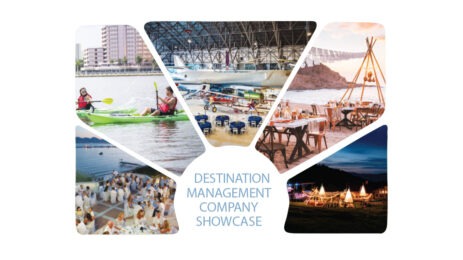Third-party planners and in-house planners have often been thought of as being on opposite ends of the meeting planner spectrum. Some people incorrectly assume that an independent planner or planning company is not as experienced or effective as an in-house corporate meeting planner. Others fear that the rise of third-party planners could threaten the success of in-house planners. However, this could not be further from the truth. In fact, when third-party and in-house planners work together, they can create truly amazing events.
To learn more about the ways in-house and third-party planners can work together to create amazing events, we sat down with Anna Monogarova, field marketing manager at ON24, and Chrissy Devenny, event producer at Dynamo Events, who are working together to plan ON24 Webinar World, a user conference for webinar marketing.
By combining their efforts, the two have helped each other:
Maintain focus
Every corporate event must meet certain goals to achieve a good return on investment. ROI is important to justify the time and money spent on events. Collaborating with Devenny gives Monogarova more time to focus on those all-important internal goals.
“Working with a third-party planner allows me to focus my attention on internal priorities such as driving registration and creating powerful content, instead of external priorities such as logistics and vendor management,” says Monogarova. “Of course, all of these facets of the event ultimately work together. But Chrissy’s help enables me to dedicate more energy to making sure we get the right attendees to the event, and that the content and agenda really speaks to their needs and interests.”
Boost communication
Third-party meeting planners are amazing resources of industry expertise, and they can be even more effective if they have a liaison or inside contact to communicate—and translate—the company’s needs. Every corporate event has a variety of stakeholders, each with their own goals, so getting clear feedback is “vitally important” to crafting successful events, says Devenny.
“Anna is the eyes and ears on the ground with the host company. She gets face-time with everyone at her organization and is able the translate the various needs of different teams,” Devenny explains. “This is key, as there are a lot of stakeholders impacted by this event, from marketing to sales to product development to customer success. Having a constant feedback loop is vitally important to making this conference a success across the board.”
Foster a productive working relationship
This mutually beneficial work partnership didn’t happen by chance. Devenny and Monogarova have clearly divided tasks, weekly meetings and, most importantly, open communication.
“Expectation-setting and communication are the two biggest factors that have helped us establish a positive, flowing relationship. From the beginning, we’ve had a project timeline and clear ownership of different aspects of planning, which have given us great direction,” says Devenny. “Of course, things are constantly changing in the lead-up to an event, so the second key element is communication. In addition to our weekly one-on-one and team meetings, we have an open communication line to avoid bottlenecks and keep the planning process moving forward.”




